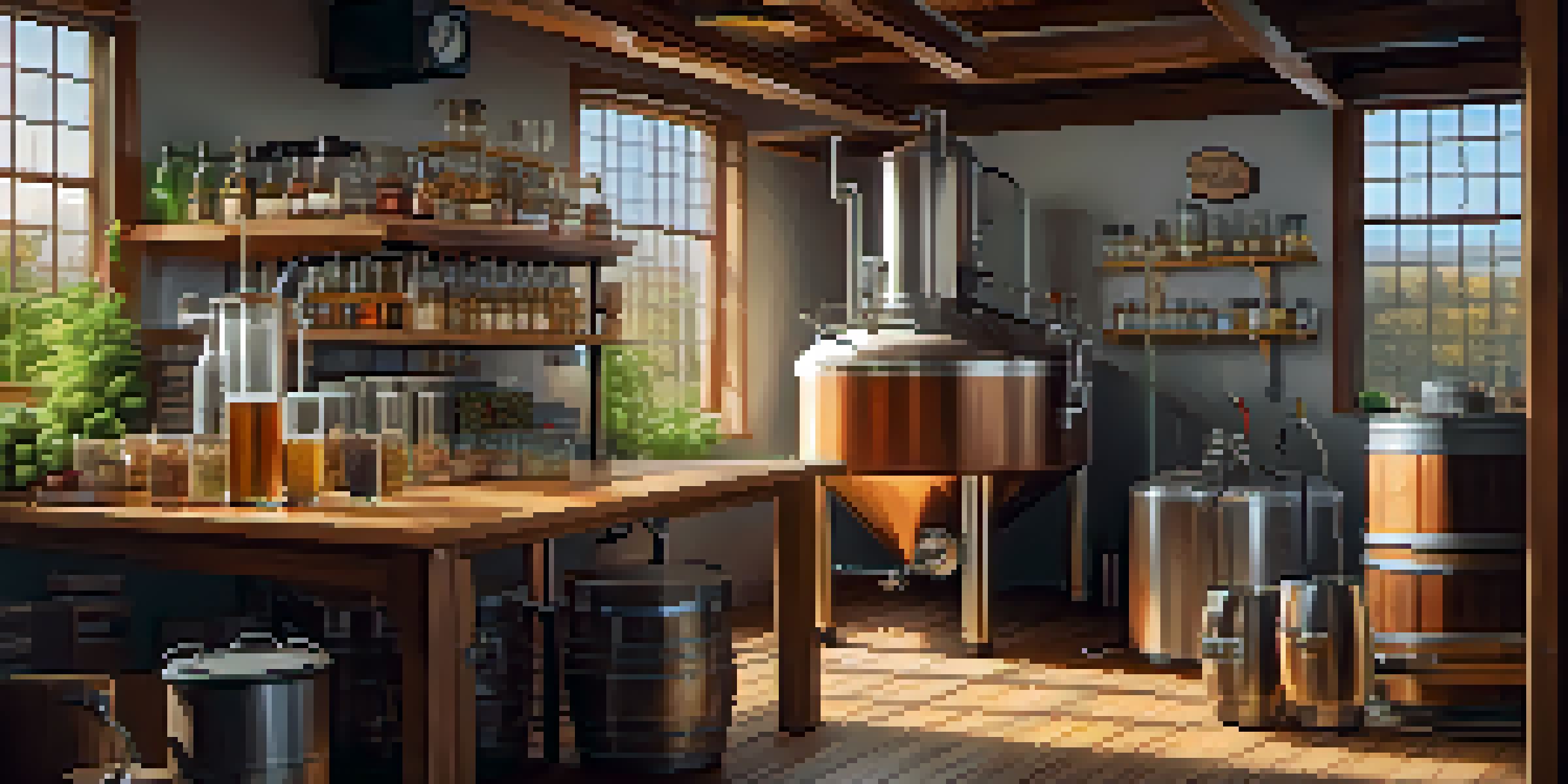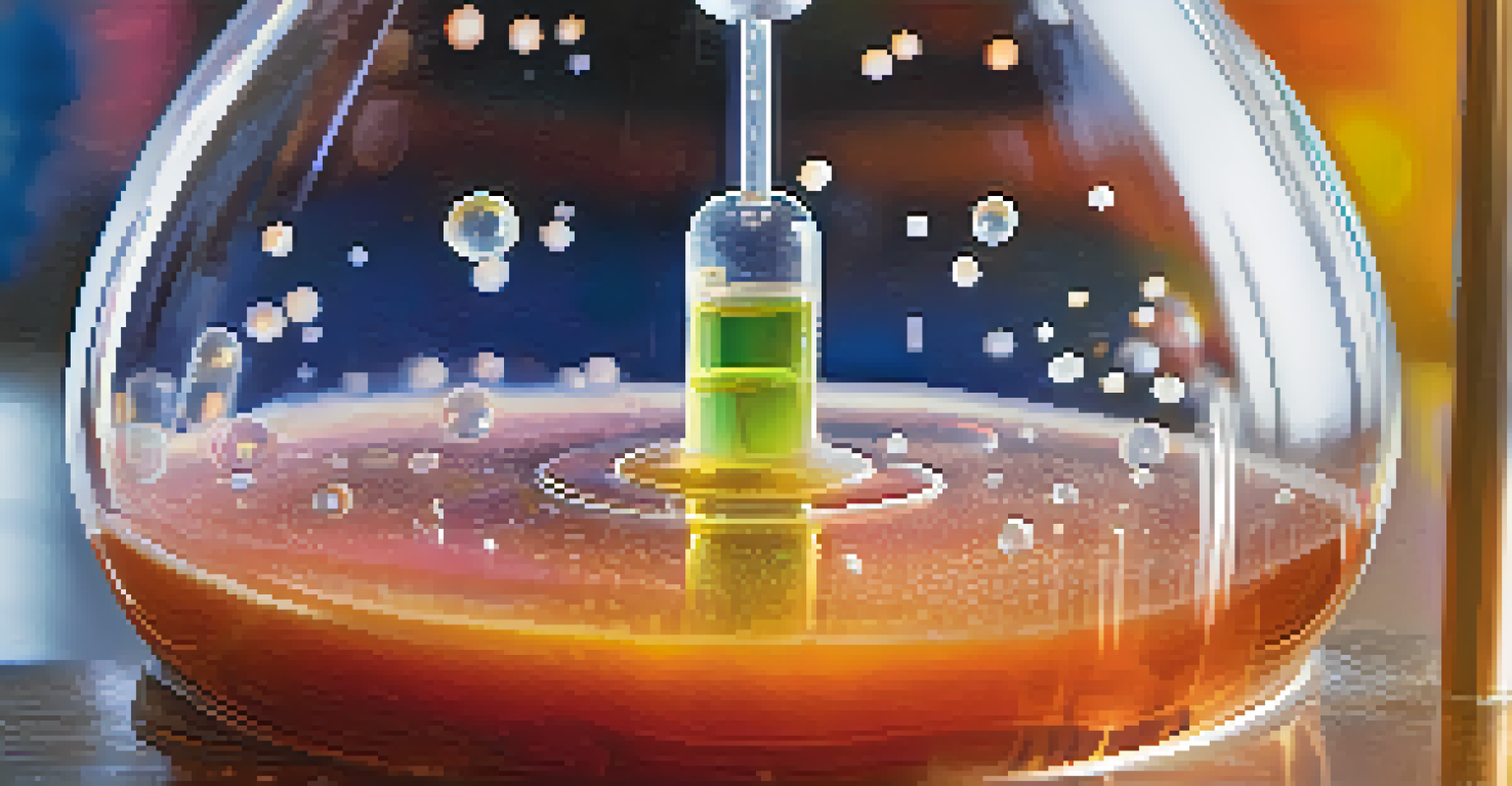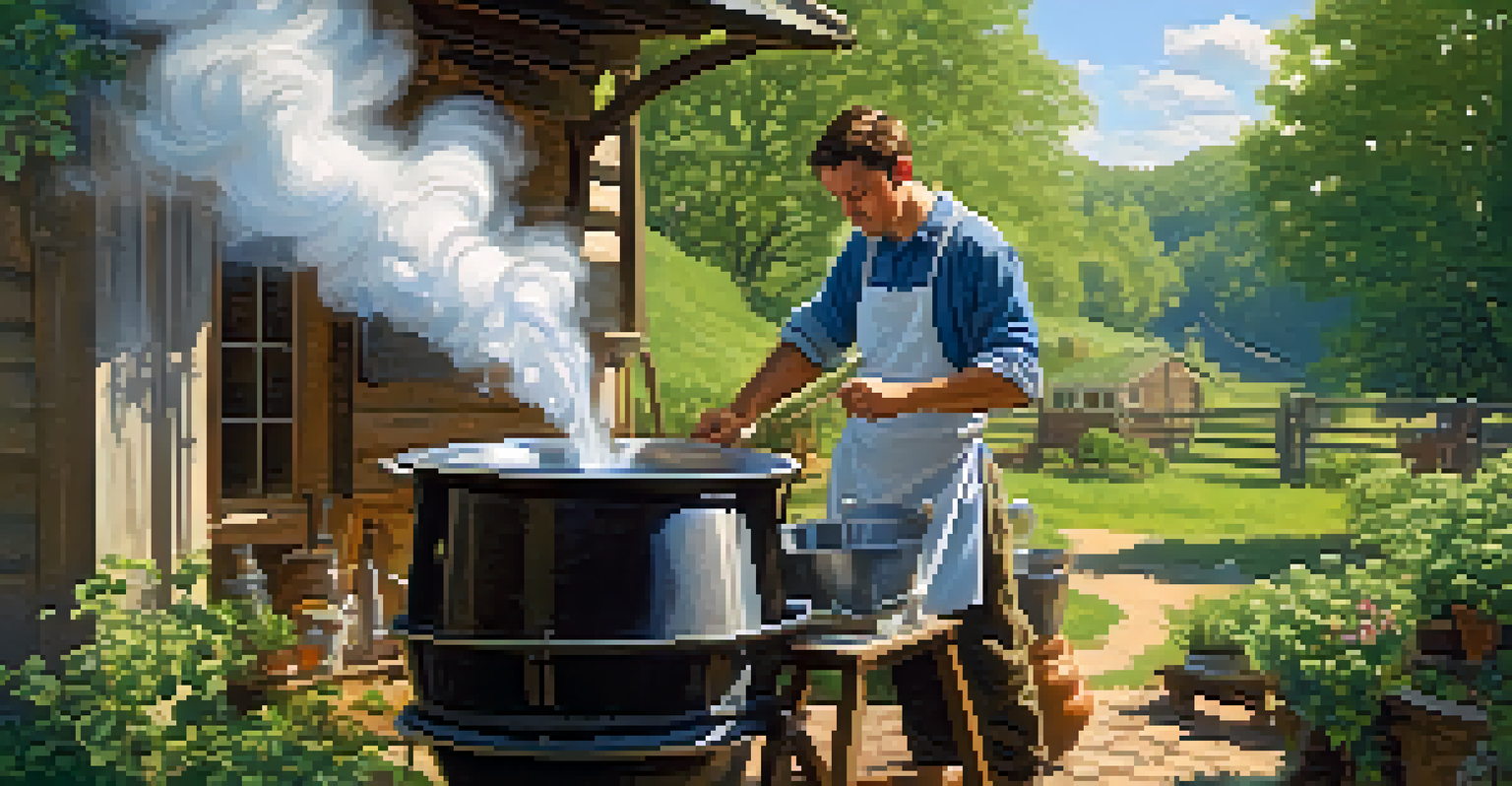The Importance of Temperature Control in Home Brewing

Understanding the Brewing Process and Temperature's Role
Home brewing is a delicate process that transforms simple ingredients into flavorful beverages. Temperature plays a pivotal role in this transformation, affecting everything from fermentation to flavor profiles. When we heat water to specific temperatures during the mashing process, it activates enzymes that convert starches into sugars, which is essential for a successful brew.
Good brewing is all about temperature control.
If the temperature is too low, the enzymes may not work efficiently, resulting in a poorly fermented product. Conversely, too high a temperature can lead to unwanted flavors and even kill off beneficial yeast. Essentially, maintaining optimal temperatures ensures that the brewing process runs smoothly, producing a drink that truly reflects your vision.
In essence, temperature control is like the compass guiding your brewing journey. Without it, you might end up off course, creating a brew that fails to meet your expectations. Let's dive deeper into how to manage this crucial element effectively.
The Impact of Temperature on Fermentation
Fermentation is where the magic happens, as yeast consumes sugars and produces alcohol and carbon dioxide. However, the temperature during this stage is critical. Different yeast strains thrive at varying temperatures; for instance, ale yeast typically prefers warmer conditions, while lager yeast enjoys cooler environments.

If the fermentation temperature strays too far from the yeast's comfort zone, it can lead to off-flavors or even stalled fermentation. Imagine trying to cook a delicate soufflé in a too-hot oven; the results would be less than ideal. In brewing, maintaining the right temperature ensures that yeast performs optimally, resulting in a clean and enjoyable flavor.
Temperature's Role in Brewing Success
Controlling temperature during brewing is crucial for enzyme activation, fermentation, and overall flavor development.
In short, understanding and controlling fermentation temperatures is vital for any home brewer. By knowing your yeast strain and monitoring the environment, you can ensure a successful fermentation that enhances your brew's overall quality.
Temperature Control Techniques for Home Brewers
There are several techniques to manage temperature effectively in home brewing. One common method is using a temperature-controlled fermentation chamber, which allows you to set a specific temperature and maintain it consistently. This can be as simple as a modified cooler or as sophisticated as a dedicated brewing fridge.
Temperature is the key to a successful fermentation.
Another approach is to use water baths or heating wraps, which can help regulate the temperature of your fermentation vessel. For instance, wrapping a towel soaked in cold water around your fermenter can help cool it down during hot days. These methods provide flexibility, ensuring your brew stays within the ideal temperature range.
Ultimately, the right temperature control technique can make a significant difference in your brewing results. By experimenting with different methods, you can find what works best for your home setup, ensuring your brews come out tasting just how you envisioned.
The Science Behind Temperature and Beer Styles
Each beer style has its own ideal fermentation temperature, which significantly affects the final product. For example, lagers are fermented at cooler temperatures, resulting in a clean and crisp profile. In contrast, ales fermented at warmer temperatures often showcase fruity and complex flavors.
Understanding these temperature ranges helps brewers tailor their processes to match the desired beer style. Think of it like baking: you wouldn’t bake a cake at the same temperature as a loaf of bread, as each requires specific conditions for the best results. The same goes for brewing; temperature can make or break your beer style.
Fermentation Temperature Matters
Maintaining the right fermentation temperature ensures yeast performs optimally, preventing off-flavors and stalled fermentation.
By aligning your brewing temperature with the characteristics of the beer style you wish to create, you'll enhance the overall flavor and enjoyment of your brew. It's all about playing to the strengths of each style and using temperature to your advantage.
Common Temperature Control Mistakes to Avoid
Even experienced brewers can slip up when it comes to temperature control. One common mistake is failing to monitor fermentation temperatures closely, leading to surprises during the brewing process. A sudden spike in temperature can cause off-flavors or even lead to a stuck fermentation.
Another pitfall is not allowing for temperature fluctuations, especially during seasonal changes. Just like a garden needs tending throughout the year, your brew may require adjustments based on external temperatures. Ignoring these changes can derail your brewing efforts.
By being aware of these common mistakes and actively working to avoid them, you can set yourself up for brewing success. Consistent monitoring and adjustments are key to producing high-quality, flavorful beer at home.
The Role of Temperature in Flavor Development
Temperature isn't just about fermentation; it also plays a significant role in flavor development during brewing. For example, during the mashing phase, different temperatures can extract varying flavors from the grains. A higher mash temperature may produce a fuller-bodied beer, while a lower temperature can lead to a drier finish.
Additionally, during fermentation, the temperature influences the production of esters and phenols, which contribute to the beer's aroma and taste. Think of it as orchestrating a symphony; each temperature adjustment can highlight different notes within the overall flavor profile.
Avoid Common Temperature Mistakes
Being aware of and correcting common temperature control mistakes can lead to higher quality and more flavorful home brews.
Understanding how temperature interacts with ingredients allows brewers to craft unique flavors and aromas. By manipulating temperature at various stages, you can create a brew that is truly one-of-a-kind and tailored to your taste preferences.
Tips for Maintaining Consistent Brewing Temperatures
Consistency is key in home brewing, and there are several strategies to help maintain stable temperatures. One effective method is to brew in a temperature-controlled environment, such as a basement or garage, where temperatures are less subject to drastic changes. This helps create a more stable brewing atmosphere.
Using insulated fermentation vessels can also aid in temperature regulation. These vessels minimize the impact of external temperature fluctuations, keeping your brew at the desired level. Additionally, monitoring equipment, like thermometers and temperature controllers, allows for precise adjustments when needed.

Ultimately, the more you can stabilize your brewing temperatures, the better your results will be. Taking these steps will help you create consistently great brews that reflect your hard work and passion.